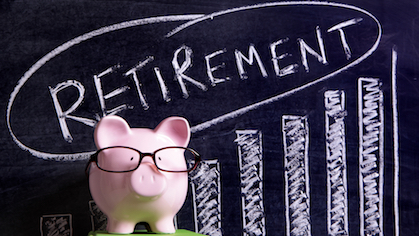Find out where and what retirees are investing in and spending their superannuation money on.
A significant number of Aussies are now entering retirement with substantial superannuation balances, after compulsory super contributions for most employees were introduced a quarter of a century ago1.

But what are retirees doing with their super money? Are they putting it toward big-ticket items, paying off debts or investing it into retirement products that provide them with a regular income when they finish working?
We look at the figures from The Household, Income and Labour Dynamics in Australia (HILDA) Statistical Report2, released this year, which follows the lives of more than 17,000 Australians.
Who has super and how much?
-
Over a four-year period (2011 to 2015), 69.2% of men and 71.4% of women said they had super at the point of their retirement.
-
The average super balance upon retirement was $454,221 for men and $230,907 for women.
What do people do with their super money?
-
52.1% of men and 67.7% of women converted at least some of their super money into a product that provided them with a regular income in retirement (such as an account-based pension or annuity), with an account-based pension the most commonly used.
-
Those that converted super into an income-stream product tended to have larger super balances than other retirees (the average balance $677,442 for men and $353,485 for women).
-
Meanwhile, 47.9% of men and 32.3% of women didn’t convert any super into an income-stream product and these retirees generally had relatively lower super balances.
-
Typically, retirees who didn’t convert any (or all of their) super into an income-stream product simply left super savings in their account, invested money elsewhere, paid off existing debts, chose to assist family members, and put money toward large expenditure items, such as renovations, holidays, and motor vehicles.
What you should know about your options
If you’re in or nearing retirement and wondering what you might do with your super money when you do access it, remember there will be a number of things to weigh up and look into.
Taking super as a lump sum
A lump sum could help you to pay off your home loan or other outstanding debts, but there may be tax implications to consider and you should think about what you’ll live on if you have no super left.
The government’s Age Pension could be one option, although if you’re pinning your hopes entirely on government support, you should consider the sort of lifestyle it might fund.
June 2017 figures show a 65-year-old retiring today needs an annual income of $43,695 to fund a ‘comfortable’ lifestyle in retirement, assuming they are relatively healthy and own their home outright3.
By comparison, the maximum Age Pension rate for a single person is around $23,254 annually4.
For more information, check out our article – Should I take my super as a lump sum.
Moving it into an account-based pension
If you’re thinking that you’d like to receive a regular income in retirement, an account-based pension (or allocated pension) could be a tax-effective option.
While the most you’ll be able to transfer into these pension accounts is $1.6 million, you won’t be limited in what you can take out, but each year, you will need to withdraw at least a minimum amount.
For more information, check out our article – Making sense of account-based pensions.
Purchasing an annuity with your super
An annuity provides a series of regular payments over a set number of years, or for the remainder of your life, depending on whether you opt for a fixed-term or lifetime annuity.
You will however be sacrificing some flexibility as you cannot easily make lump sum withdrawals and life expectancy is also a major consideration.
To determine what will work best for you please contact us on Phone 02 9906 6566 to discuss .
This article provides general information and hasn’t taken your circumstances into account. It’s important to consider your particular circumstances before deciding what’s right for you. Although the information is from sources considered reliable, we do not guarantee that it is accurate or complete. You should not rely upon it and should seek qualified advice before making any investment decision. Except where liability under any statute cannot be excluded, we do not accept any liability (whether under contract, tort or otherwise) for any resulting loss or damage of the reader or any other person.
1, 2 The Household, Income and Labour Dynamics in Australia (HILDA) Statistical Report 2017 page 72, 73
3 ASFA retirement standard – June 2017 quarter table 1
4 Department of Human Services – Age Pension payment rates table 1


